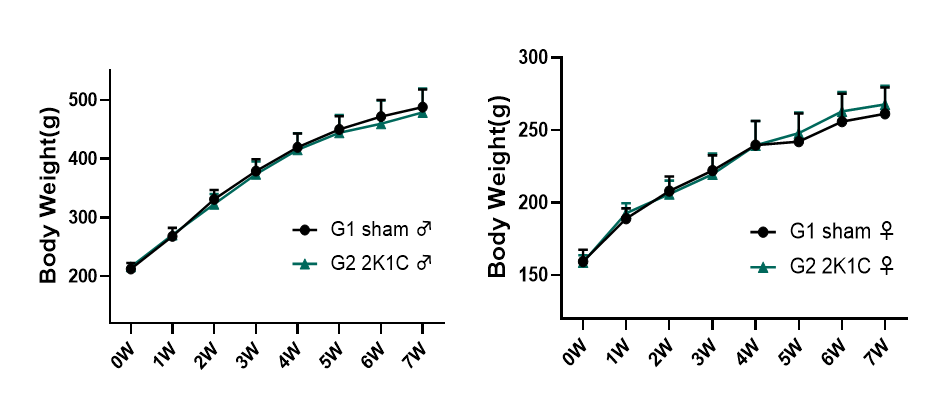Hypertension (HTN) is a chronic medical condition characterized by persistently elevated systemic arterial blood pressure (BP).
2K1C-induced hypertension model in SD rat
The two-kidney, one-clip (2K1C) model is a widely used experimental approach to induce renovascular hypertension in rodents by surgically placing a constrictive clip on one renal artery while leaving the contralateral kidney intact. This results in chronic activation of the renin-angiotensin system (RAS), leading to sustained hypertension and end-organ damage.

Fig.1 Overview of pharmacodynamic evaluation on 2K1C-induced rat hypertension model

Fig.2 Body weight of 2K1C-induced rat hypertension model
There was no significant difference in body weight between 2K1C-induced hypertensive rats and sham operation rats. Data were presented by mean ± SEM, n=5-10. *, p < 0.05; **, p < 0.01; ***, p < 0.001 and ****, p < 0.0001

Fig.3 Blood pressure and serum CREA, UREA, LDH and CK of 2K1C-induced rat hypertension model
SBP in 2K1C-induced hypertensive rats was significantly higher than that in sham operation rats(Fig. 3A,D). Serum CREA of both male and female hypertensive rats induced by 2k1c was significantly higher than that of sham operation rats(Fig. 3B,E), serum LDH of male model rats was significantly increased, while serum LDH of female rats was not significantly different from that of sham operation group(Fig. 3C,F). Data were presented by mean ± SEM, n=5-10. *, p < 0.05; **, p < 0.01; ***, p < 0.001 and ****, p < 0.0001

